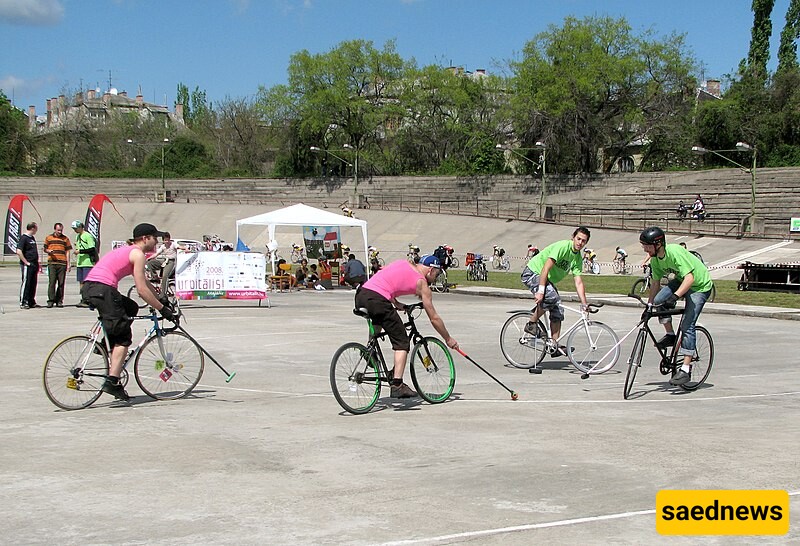SAEDNEWS: Cycle polo is a team sport similar to traditional polo, with the key difference being that players ride bicycles instead of horses. This sport can be played on grass or hard courts. It was officially invented in 1891 by Richard J. Mecredy in Ireland.


Today, cycle polo is played in countries such as the United States, France, India, Ireland, Germany, England, Hungary, Australia, and Canada.
This sport was invented in 1891 by an Irishman named Richard J. Mecredy. That same year, the first cycle polo match was held between the Scalp and Oun Host CC teams. By the late 19th century, the sport had spread to England, the United States, and France.
The first international match was held in 1901 between Ireland and England. In the 1908 London Olympics, cycle polo made its debut, with Ireland defeating Germany to win the gold medal.
In the 1930s, the sport gained peak popularity in England, with regional leagues being established. Similarly, in France, the formation of a cycle polo league contributed to the sport’s growth, leading to international matches between France and England.
By the 1980s, India and the United States emerged as dominant powers in cycle polo. The official Cycle Polo Association was established in the United States in 1996. In 1999, the next major competition was held in Vancouver, Canada, where India emerged victorious. In 2004, the United States won the title in a competition featuring teams from Canada, India, Pakistan, and France.
Today, organized competitions take place in countries including Argentina, Canada, Australia, Germany, France, India, England, Malaysia, Ireland, Pakistan, New Zealand, Sri Lanka, South Africa, the United States, and Switzerland.
In 2001, the sport was reorganized under the Union Cycliste Internationale (UCI). A new form of the game, called urban cycle polo, gained media attention in the United States and Canada in 2007. This less formal version features modified rules suitable for urban settings.
In 2008, cycle polo was played in two formats:
Hard Court Polo
Grass Polo
Hard Court Polo: This version began around eight years ago in Seattle. A Seattle resident, Bill Dozer, wrote an article examining this version of the sport. He highlighted the variations in rules, playing surfaces, bike types, and game duration from city to city.
Grass Polo: The older form of the sport is played on a rectangular grass field, officially measuring about 150 by 100 meters. For informal games, smaller dimensions can be used. The official field dimensions can vary between 120–150 meters in length and 80–100 meters in width. French rules permit a field size of 80 by 100 meters.
The ball’s diameter ranges between 30.5 and 36.5 cm, and the mallet used is about 1 meter long.
Each team has six players (seven in France), with four players (five in France) on the field at any time. The remaining players act as substitutes.
International matches last about 30 minutes, divided into four 7.5-minute periods called "chukkas." In the case of a tie, extra time is added to determine the winner. During extra time, the size of the goals may also be adjusted.
General Fouls: If a general foul occurs near the goal, the team fouled upon is awarded a goal.
Intentional or Dangerous Fouls: In cases of intentional or dangerous fouls, the referee can substitute the offending player with a reserve player.
Cycle polo is an exciting blend of athleticism, strategy, and teamwork, combining traditional elements of polo with the agility and skill required for cycling.

